Maybe many people are still shocked after the tragedy that took place at the Astroworld music festival in the US last week. At least nine people were killed during rapper Travis Scott’s concert, described by many media outlets as the result of a stampede in a crowd of 50,000 people.
But scientists disagree. According to them, stampedes are unlikely to be the cause of fatal accidents in crowds. When a person is trampled in a chaotic crowd, it is more likely that he will still be alive.
If the victim died, most likely it was because they were “drowning” in a sea of people – which at high densities, they’re behaving exactly like liquid molecules.
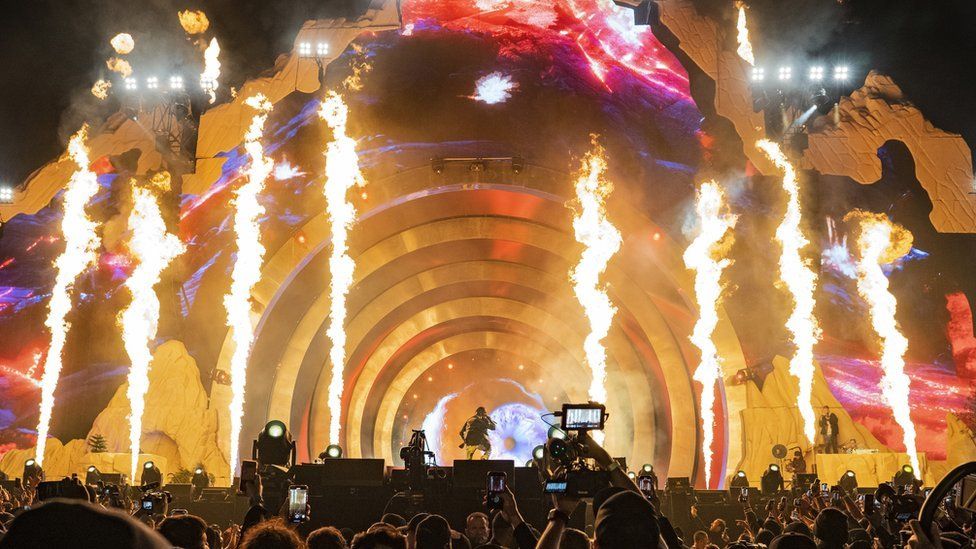
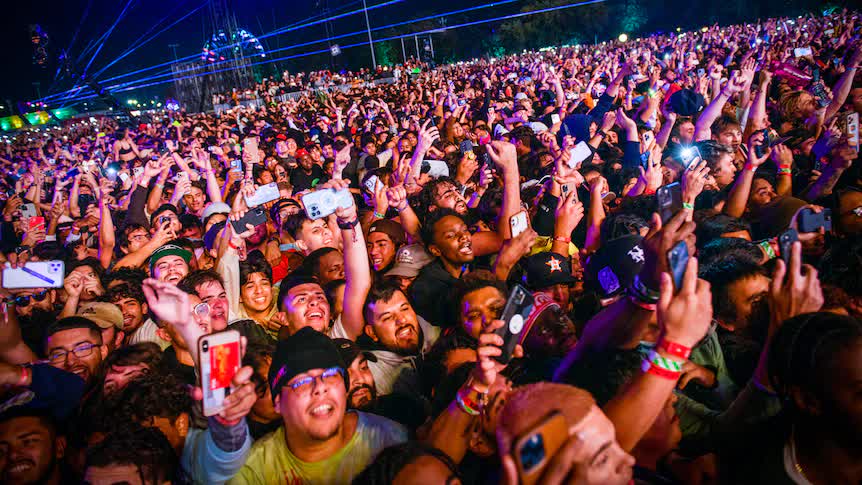
According to fluid dynamics-based crowd accident studies conducted over the past 30 years, a crowd is considered safe when its concentration is below the threshold of 4 people/m2.2. Then each person in this crowd has enough space to move and is in complete control of his or her movements.
But once that limit is broken, especially when the density increases to 6 people/m2, a strange thing will happen: People will now be pressed so tightly together that they begin to move together like water molecules.
When a person shoves the person next to them, the person next to them will also rush to the person standing next to them. Like that, a wave would be generated until the last person, who would be subjected to tremendous pressure as he smashed into the barrier.
“It’s like a current, it’s almost like you’re in an ocean“, said Reese Bludau, a 20-year-old witness who attended Travis Scott’s concert. “You definitely can’t move your arm. I feel like 4-6 people touching me all the time.”
Bludau assessed the force with which he was being repeatedly pressed against his chest and back, like being crushed by a 15 to 20 pound weight, equivalent to 7-9 kg.
The Science of Crowds
Crowd studies have been carried out since the 1990s, after successive accidents occurred during the hundreds of thousands of Muslim pilgrimages to Mecca. In 1990, for example, the pilgrimage resulted in 1,426 deaths among crowds. In 1994, 270 people also died. The numbers for 1997 and 1998 were 240 and 180 respectively.
John Furin, a pioneering scientist in the field of mass accident research, wrote in a 2002 document: “An excessive crowd can lead to a loss of individual control and give rise to psycho-physiological problems.
When the density of the crowd is equal to the area of the body occupied by a person, the control of each individual in it disappears. Every person in this crowd becomes an involuntary part of the crowd
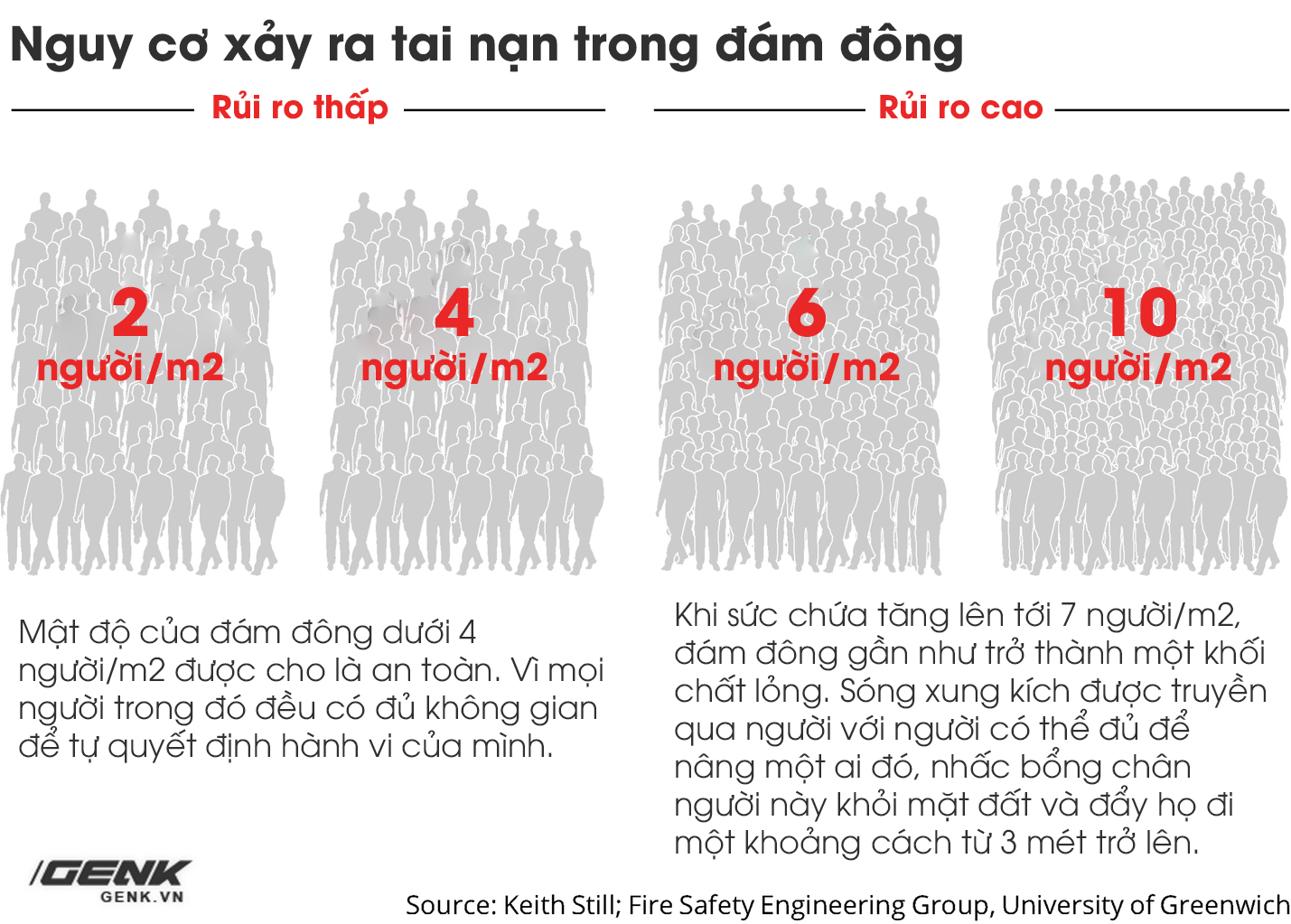
“When the capacity increases to 7 people/m2, the crowd almost became a liquid mass. Shockwaves transmitted person-to-person can be enough to lift someone, lift their legs off the ground, and propel them to a distance of 3 meters or more.
People can literally have their shoes taken off, clothes can be torn. The crowd pressure on your chest is so intense, plus the anxiety, you’ll find it hard to breathe. The heat and isolation of others can cause some people to faint.
Outsiders want to come in to help someone who has fallen when that is not possible. Getting people out can only be done by lifting them up and over the heads of the crowd.” written document.
Back at Travis Scott’s concert, witness Bludau confirmed that he was swept up to 65 meters in just 20 minutes. Everything is like a tidal wave. Bludau admits he stepped on people’s shoes when they fell off their feet.
“Whenever there is a strong push from behind – when everyone is moving forward – I will fall forward.”, Bludau said. “And then whenever that wave comes back, I’ll step back and have to grab the person in front of me.”
Dirk Helbing, a computational social science researcher at the Swiss Federal Institute of Technology, said the waves were a warning sign of a dangerously dense crowd.
Everyone is waiting for a gap in the crowd because they don’t have space to move around naturally. If someone falls, stumbles or is jostled, this can create what’s known as “” says Helbing.black hole effect“, more and more people will be sucked into that void and fall together.
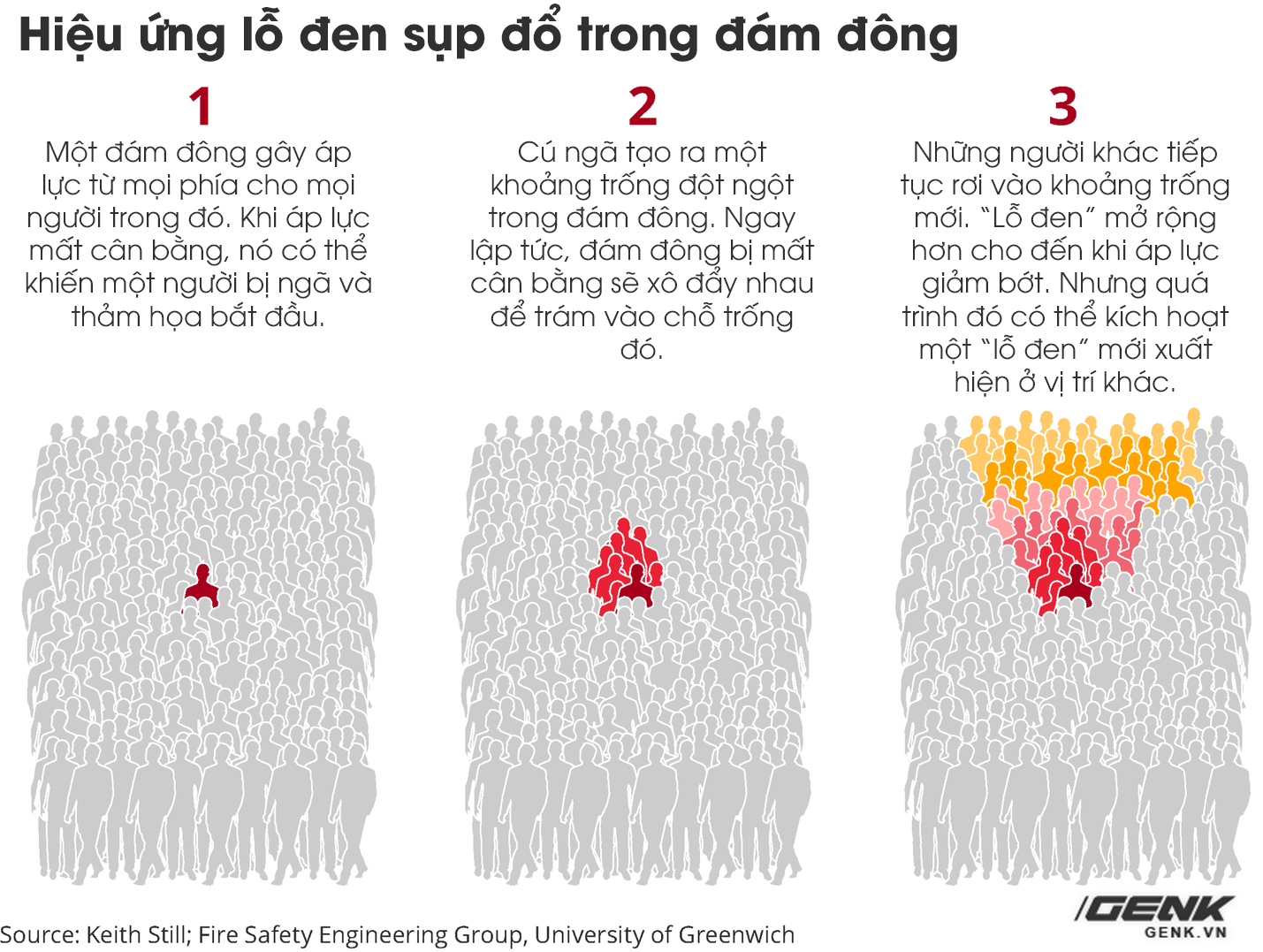
Not from trampling
Edwin Galea, a professor at the University of Greenwich performed a computer simulation of the black hole effect of the crowd. He said it can be triggered for any reason when a person exposes the void.
He may have slipped, or is trying to get his shoes back on. But once the gap appeared, the person next to him couldn’t even if he wanted to hold himself back so as not to rush into the gap.
The pressure from behind will push him, he has no control over this crowd, and so will everyone else after that.
The black hole just stops expanding until a large enough number of people have fallen, the pressure will be relieved. But maybe the first victim, who bent down to find his shoe, suffocated.
That might be exactly what happened at Travis Scott’s Astroworld gig last week. The event is estimated to have attracted the participation of 50,000 spectators.
When Travis Scott appeared on stage, everyone was pushed forward, said Samuel Peña, the chief of the Houston Fire Brigade. The crowd was so dense that some people were knocked down or passed out when they couldn’t breathe.
In the end, nine people died, all younger than 30 years old. The two victims were teenagers just over 14 years old. Police confirmed the stampede occurred but urged people to be cautious when concluding that it was the cause of the victims’ deaths.

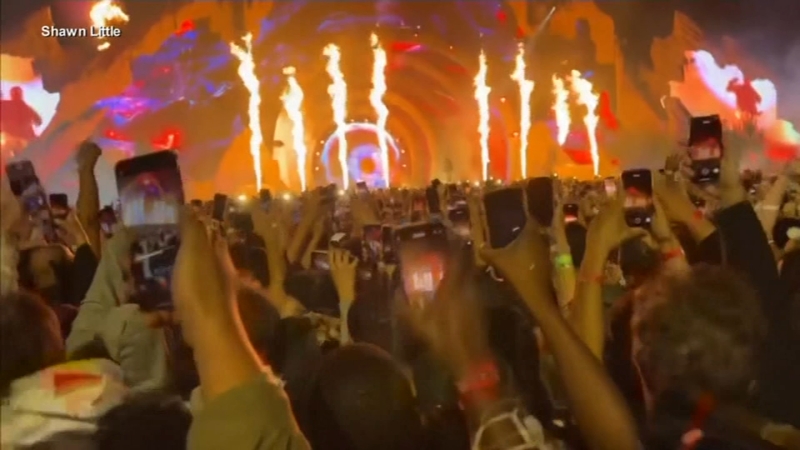
In this case, science is on the police’s side. Crowdologists have long said no one can blame the crowd and use the word “step foot on something” to talk about the cause of the deaths that occurred in it.
“It’s completely absurd“, said Professor Galea.Using the word stampede creates the impression that it is an emotionless mob that only cares about themselves, and they are ready to crush others to get away.”
The truth is that in a dense crowd, no one will be left with the ability to control their own actions. People just jostled each other and pressed on top of the others because they had no choice.
Even if stampedes do happen – meaning someone runs over you – your chances of dying from the behavior are still very low. “I have not seen any cases of stampedes that can cause mass death”, said Keith Still, a crowdsourcing researcher at Manchester Metropolitan University. “People don’t die because they panic. They panic because they’re going to die.”
Therefore, scientists say that in crowd accidents like the Astroworld event, the big responsibility will fall on the organizers. They did not care about the safety of the attendees, did not know or deliberately ignored the principles of crowd science.
If the organizers know and practice the correct measures to control the audience density below 4 people/m2, perhaps the unfortunate accident did not happen. That continues to be a valuable lesson for any future mass event.
Consult Businessinsider, Theguadian
.
